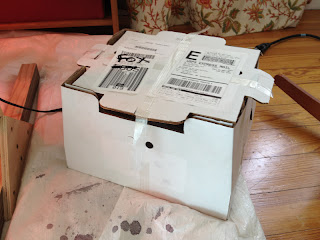Small Fruit Sunday

Yesterday we planned to plant our newly arrived blueberry bushes in the beds we had prepared for them last fall . To our surprise, when we opened the package it wasn't just blueberries, but all of the small fruits we had ordered from Miller Nurseries . This turned our relaxing, light day in the garden into a pretty busy one — and a windy one at that. The weather the past three nights has dipped to just above freezing (so we continue to water and cover plants each evening just in case — a total pain), and during the day it has been sunny but incredibly windy. Not that much fun to be out in, but we had a lot to get into the ground. Before the planting even happened, though, Kirk replaced our broken fence sections . Those had been down for a year and a half, and we finally have managed to be good neighbors and get them fixed. They look all nice and new now (which looks a little strange in comparison to the old sections surrounding it), but it should weather into the same sil...











